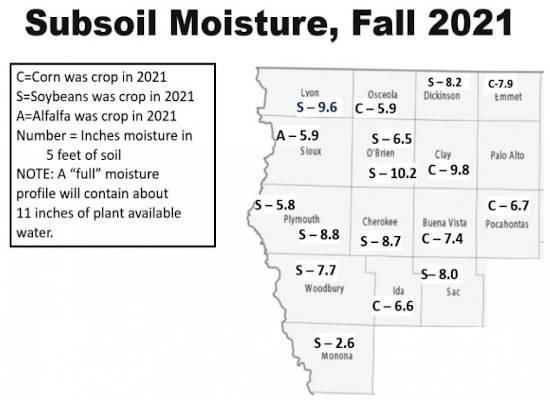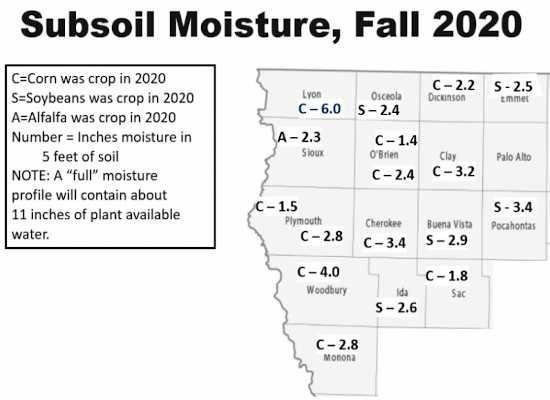By Gentry Sorenson and Joel DeJong

The northwest Iowa fall survey of subsoil moisture completed by Iowa State University in November shows improved subsoil moisture at nearly all locations when compared to the fall of 2020. Subsoil moisture levels are checked in the fall in many northwest Iowa counties through this survey. The survey provides a historical perspective on subsoil moisture levels.

This summer much of NW Iowa was in a drought classification with the drought intensifying by August 3rd leading to parts of Dickinson county and Clay elevated into D3 extreme drought intensity. Rainfall resumed and subsoil moisture began to replenish in August through November.
Rainfall was above average (positive departure) for most NW Iowa locations from August 11th to November 24th which led to the replenishment of subsoil moisture levels. Except for the Monona County site, all others are at or above the long-term averages for November 1 sampling dates.
This table is valid for a period from 11 Aug 2021 to 24 Nov 2021 (inclusive). "Climo" is the climatology value, which is computed over the period of 1951-2015. From IEM Climodat Station Monitor, https://mesonet.agron.iastate.edu/climodat/
Iowa soils have the potential to hold from 10.0 to 11.0 inches of moisture in the top five feet of soil. Soil moisture readings from sites where Iowa State University personnel analyzed soil moisture in northwest Iowa had 2.6 to 10.2 inches of plant available moisture.
Rainfall when the ground thaws in the spring through the months of March and April will contribute to subsoil moisture. Typical rainfall for those months is three to five inches. About 80 percent of that rainfall will contribute to subsoil reserves. Corn and soybean crops require about 20 inches of moisture from rainfall and subsoil moisture to produce a crop. That number may increase to 25 inches per season when high temperatures and windy conditions are prevalent during the summer.
Source : iastate.edu